Chatham was once the
home of Tudor warship building and the birthplace of Nelson’s HMS VICTORY.
Chatham's Dockyard and its defences have an unrivalled and illustrious history
and is the world's most complete example of an historic dockyard from the age
of sail and early age of steam. It was also instrumental in securing and
maintaining Britain's worldwide influence, leading the world in industrial
design, naval architecture and military technology.
by Alexander
Naughton
edit by Earl of Cruise
edit by Earl of Cruise
Cruise destination Chatham, Kent - Source: Wikipedia (original size)
Chatham lies on the
Medway in Kent, to the south side of the Thames estuary. The Medway is the
longest river in Kent. No one is sure how it got its name, but it is probably
taken from the Anglo-Saxon words for ‘middle way’, because the river seems to
cut the north of the county in two.
In the mid-17th century, Chatham was the Royal Navy's main fleet base, and heightened fear of
invasion (following the 1667 Dutch Raid) led to significant investment in
fortified land defences. Fort Amherst and the Chatham Lines - a major network
of ditches, tunnels, underground stores, barracks, and gun emplacements - were
begun in 1756. Its greatest challenge was the Dutch raid in 1667.
Chatham, Fort Amherst, outer defense - Sourece: Wikipedia (original size)
Upnor Castle, Source: Roaming Required
The Dutch raid along
the River Medway in June 1667 was carried out over several days. It targeted
the English fleet at Chatham, leaving a large section of the Royal Navy either
captured or destroyed. There were few casualties, but the loss of the realm's
largest warships brought humiliation to the country and damaged the personal
reputation of King Charles II. For the Dutch you could say it was the high water
mark of Dutch naval power. The attack brought enemy ships right into the heart
of the England’s main naval base. The Dutch fleet, under the command of Admiral Michiel de Ruyter, attacked and burnt the new fort at Sheerness, at the mouth
of the Medway. The leading Dutch ships then headed upstream. They broke through
the chain that stretched across the water between Gillingham and Hoo Ness. The
attack saw the English fleet flagship the ROYAL CHARLES towed away as a
trophy. After a night spent at anchor, more Dutch ships pressed on towards
Chatham. On 13 June they fought with the castle at Upnor, and were forced to
turn back, although not before they had damaged a number of English ships. Even
though the castle prevented an attack on the Dockyard, the Dutch Raid was a
terrible defeat for the English navy. For the English it was the third in a trio of disasters to befall the nation following on
from the Great Plague and Great Fire of London. It was the last time that enemy
forces actually landed in the UK. It created such panic in London that people
sent their most valued possessions out of the city, fearing imminent occupation
by Dutch forces. However today the Battle of the Medway is little known in the
UK and in 2017 it marks its 350th anniversary with special events at
the Chatham Historic Dockyard and the Guildhall Museum.
Battle of Medway, Dutch painting, Source: deruyter.org
From the mid 18thcentury, fleet anchorage moved westwards down the English Channel, and Chatham
took on new significance as a centre for shipbuilding and repair. This led to a
vast array of new dockyard facilities, and a resultant increase in facilities
for the rapidly-increasing military and civilian workforces (at Brompton Barracks and Brompton Village), as well as the refortification of the Chatham
Lines.
Chatham Dockyard and
its Defences is an outstanding example of a complete industrial military
complex from the heyday of the age of sail (1700 to 1820) and the early period
of the age of steam (1820 to 1865).
During this period Chatham Dockyard
was one of the foremost naval shipbuilding and repair yards in the world,
protected by sizeable military fortifications and barracks. It played an
instrumental role in enabling Britain to achieve naval supremacy and exertpolitical, economic and cultural influence on a world stage.
This was at a time
when such dockyards were the largest industrial centres in the world. Their
contribution at the forefront of the Industrial Revolution is represented by
the significant investment in the naval and defensive facilities at Chatham
during this period. Today, the range of buildings and structures at Chatham
Dockyard collectively exhibit a superlative survival - in marked contrast to
the other leading dockyards of the day. It is this completeness, of both function
and survival, which makes Chatham Dockyard and its Defences unique.
The key heritage
sites around the area of Chatham include:
|
|
the River Medway
(the determining factor for the location of the Dockyard)
|
|
|
Chatham Historic
Dockyard (including dry docks; covered slips; facilities for the manufacture
and processing of rope, timber, sails, lead, paint, iron and steel; storage;
administrative and residential areas)
|
|
|
Brompton Barracks
(home to the Royal Engineers)
|
|
|
Brompton Village
(founded to serve the needs of the naval, army and civilian personnel)
|
|
|
Fort Amherst and
the Chatham Lines (the continuous permanent artillery fortifications and
associated Field of Fire)
|
|
|
Kitchener Barracks
(on the site of the 1757 Infantry Barracks used for recruitment of soldiers
for overseas service and for those defending the Chatham Lines)
|
|
|
Old Gun Wharf (the
major ordnance depot)
|
|
|
Upnor Castle,
Barracks and Ordnance Depot (central to the storage of gunpowder for the navy
and army).
|
In addition to
shipbuilding and the naval base the Medway was home to other industries. Two
Medway businesses became world famous: Aveling and Porter and Short Brothers.
Thomas Aveling set up a repair shop in Rochester in 1851, to help local farmers
maintain the new machines that were starting to become popular. In 1860 he
moved to the banks of the river in Strood. He started to produce road-going
steam engines that could move themselves from place to place instead of having
to be dragged by horses. With his partner, Richard Porter, he built his
business up until it had become the largest traction engine factory the world
had ever seen. The company became the largest manufacturer of steam rollers in
the world. In 1933 the company following various mergers (by then it was called
Aveling-Barford) moved to Grantham and left its Strood site.
Short Brothers were
one of the very first aircraft manufacturers. They moved to Rochester in 1913
because they were interested in building seaplanes and wanted to use the River
Medway as a runway. For more than 30 years their flying boats were a familiar
sight, tearing up and down the river between Rochester Bridge and what is today
the site of the M2 motorway.
Rochester Cathedral - Source: Wikipedia
During the 1920s and
1930s, as more and more people began to travel round the world, Short’s aeroplanes
were bought by airlines because they could land in countries where there were
no airports.
Each one was built in
the factory on the esplanade and launched down a slipway into the river. Later
the company also started to build land planes at Rochester airport. During the
Second World War the Short Sunderland became one of the Royal Air Force’s
best-known large aircraft, sinking enemy submarines and landing on the sea to
rescue survivors.
SHORT SUNDERLAND Mk V - Source: Wikipedia
Short Brothers closed
their Rochester factory and moved to Belfast in 1948.
The Medway also has a
strong association with Thames Sailing Barges. The Medway was thick with barges
in the 19th century. They were the delivery lorries of the time, taking
hundreds of tons of bricks and cement up to London and bringing back waste
materials to burn in the brick fields and the factory furnaces. There was
always competition, with barge captains challenging each other to races along
the estuary. Organised barge races began on the River Thames in 1863. They were
set up by a man called Henry Dodd, who had made a fortune out of rubbish
collection and brick making. He thought that the design of barges could be
improved if they were made to win races, as well as carry lots of cargo. He
also wanted to encourage the barge captains to be proud of what they did.
Thames barge, EDITH MAY, sailing on topsail alone on the River Medway - Source: Wikipedia
All this attracted
lots of interest from people working on the River Medway. Some of the big brick
and cement companies owned large numbers of barges, and they began to arrange
their own races. Out of these grew the first official open barge match on the
Medway, which took place in 1880. The usual course was between Gillingham and
Sun Pier, in Chatham. Racing continued until the outbreak of war in 1914 and
then, after a pause, fairly regularly until competition was again stopped, this
time by the Second World War in 1939.
Looking from the river at Sun Pier along the Great Barrier Ditch, to the Gun Platforms at Fort Amherst - Source: Wikipedia
The fastest barges
became quite well known and the owners were very proud of them. Competition was
fierce, with SARA, built by Everard’s on the Thames, winning races throughout
the 1930s on the Medway. In 1955, the London and Rochester Trading Company’s
barge, SIRDAR, appeared to have finally got the better of SARA and EVERARD’s
began refitting an old barge, VERONICA, to make it faster and take the title
back. All this cost money. In 1963, the owners had finally had enough and
withdrew their support for racing. Most of the company barges were scrapped,
although a good number of historic Thames Sailing Barges survive today.
Luckily, a number of
private owners decided to continue the tradition of barge racing on the River
Medway. Today an annual Medway Barge Match attracts about twelve barges each
year competing in three different classes. The race covers almost thirty miles,
from Gillingham out into the estuary and back again. Races also take place on
the River Thames at Gravesend, the River Blackwater at Maldon, Essex and on the
River Swale at Faversham.
The mouth of the
Medway, where the river meets the Thames, provides good conditions for the
mooring of very large ships. These include container ships that bring large
amounts of cargo to Kent by sea.
Major rivers in Kent - Source: Wikipedia
The Old Town Hall (opened in 1900) now serves as a theatre - Source: Wikipedia
Grain Crurch - Source: Wikipedia
The Isle of Grain
(Old English Greon, meaning gravel) lies at the end of the Hoo Peninsula, (Hoo is the Old English word for spur of land) right at the mouth of the River Medway.
In 1989 part of the old oil refinery here was converted into the LondonThamesport Container Terminal. Thamesport is one of the largest and busiest
ports in the United Kingdom. It is the country’s only fully automatic container
terminal. This means that its 655 metres of quayside are equipped with
driverless cranes to move the containers around the port. The position of each
container is tracked by the very latest computer systems. London
Thamesport, a member of the Hutchison Port Holdings (HPH) Group, is a modern,
automated container port located at the mouth of the River Medway in the Thames
estuary. It has a rail connection enabling containers to be taken by train to
destinations across the UK. However in recent years it has faced stiff
competition from other ports in the South East including Southampton,
Felixstowe, London Gateway and London Tilbury.
Also there is the
London Medway port cluster owned by Peel Ports. The ports of Sheerness and
Chatham form the core terminals of Peel Ports’ London Medway cluster, named to
reflect how close they are to the capital. They are the statutory harbour
authority along a 27.3 mile stretch of the Rivers Medway and Swale. This port
cluster handles a wide variety of cargos. The river Medway has the largest
catchment area in Southern England and its reach and strategic location give it
an influence that’s even greater. Positioned on the Thames Estuary, closer than
Tilbury to Dover and within easy reach of Northern Europe, it also has
deep-water access, which is perfect for ships of varying sizes coming from
everywhere in the world.
Cruise
Port of Call
Chatham Docks (part
of London Medway port cluster) was also a popular calling point for cruise
passengers. Back in the 1950s, the MEDWAY QUEEN allowed locals a day trip from
Sun Pier to Southend and Herne Bay in the days when for many people a week’s
holiday away from home remained a dream.
ps MEDWAY QUEEN at Gillingham Pier 2016 - Source: Wikipedia
ps MEDWAY QUEEN seen at Southend in 1960 in a
photo kindly supplied by Gillon Ferguson - Source: Paddlesteamers.info
A revival of
Chatham’s cruise industry could also have a positive knock on effect on the
local economy, bringing visitors to the area who spend money in Chatham,
helping to sustain and create local jobs. Conservative estimates show that each
passenger contributes £80 to the local economy every time they go on land.
The
Destination
Chatham Dockyard
bears exceptional testimony to the array of shipbuilding and repair facilities
which were the result of massive investment in the Royal Navy and to the rapid
evolution in technology, architecture and working practices made possible by
this investment. Chatham Dockyard and its Defences is an outstanding example of
a complete industrial military complex from the heyday of the age of sail (1700
- 1820) and the early period of the age of steam (1820- 1865).
Topographic model, Royal Dockyard at Chatham by William Phillips - Source: Royal Museums Greenwich
In its early days,
dockyards such as Chatham were the largest industrial centres in the world.
Today the range of buildings and structures collectively exhibit a superlative
survival. It is this completeness of both function and survival which makes the
site exceptional as an unrivalled demonstration of the interchange of ideas on
industrial, naval and military technology and architecture. Chatham is exceptional
testimony both to the long history of investment by European nations in naval
power to dominate global trade and shape international geopolitics, and also to
the significant stage of history in which superiority at sea was transformed
into territorial and commercial advantage.
HMS GANNET at Chatham Dockyard Kent - Source: Chatham Dockyard
The dockyard
buildings, such as the ropery and the covered slips, the ordnance facilities,
the fortifications and barrack accommodation for the soldiers all demonstrate
the industrial-scale investment, sustained technological innovation and
development of defensive techniques, necessary to support a major naval and
colonial power.
The area includes
over 60 scheduled ancient monuments and 150 listed buildings, covering the
Historic Dockyard, Fort Amherst, Upnor Castle, Brompton Village and Barracks,
The Royal Engineers Museum (Wiki), the Great Lines and the River Medway.
Royal Engineers Museum - Source:Wikipedia
At the core of the area
is the Dockyard and its associated facilities, and these were protected by
major fortifications and barracks. The huge scale of investment needed to
achieve world naval dominance during the 18th and 19th centuries is evidenced
at Chatham by the complexity and size of the Dockyard and the diversity of
structures from a variety of dates. The change to iron ship construction was
necessitated by the desire to sustain British naval dominance, extend colonial
influence and consolidate control of trade, and was facilitated by the British
industrial revolution. It is represented by new types of structures at Chatham,
principally the covered slips, and by investment in lengthening of dry docks
and the construction of new buildings for mechanised production. As a strategic
resource of great significance, the Dockyard had to be defended from attack.
The increasing scale and complexity of the fortifications and the defence
landscape represent a period when international politics created fear of
invasion, and thus massive investment in home defence.
Alongside the
Dockyard and its defences, other essential facilities grew up. These include
the ordnance facilities for supply of armaments and gunpowder, and the barracks
for the army that served the defensive garrison and acted as recruiting depots
for troops on overseas service. The final essential ingredient in making this
system work was the civilian labour force of the Dockyard. The area includes
the settlement of Brompton which was created specifically to serve the navy and
the military, and where much of the Dockyard workforce lived.
Upnor Castle, constructed in the beginning of the reign of Elizabeth I. - Source: English Heritage
Upnor Castle was an
integral part of the Royal Dockyard complex. It was built in 1559-67 as the
first principal defensive structure for the fleet when anchored in the River
Medway. After the Dutch Raid (1667) it
took on a new role as the main powder magazine for the Ordnance Board at
Chatham. Powder had to be stored remotely from the dockyard and Gun Wharf in
order to limit the chance of catastrophic accidents at either site. The
ordnance function expanded significantly during the Napoleonic wars when a
major magazine (now demolished) was constructed to the north of the castle (1806).
A further magazine was constructed in 1856.
Fort Amherst, Chatham - screenshott from youtube

Inside Rochester Castle's grounds showing the keep as seen from the north-west; clearly depicting the castle's proximity to Rochester Cathedral. - Sourece: Wikipedia
Historic Rochester, with its Norman castle was place cherished by the Victorian novelist, Charles Dickens, who lived in the area as a child and returned as a successful
author. With history dating back
centuries, there is so much to see and do in the historic city itself. Explore
the stunning Rochester Cathedral, founded in 604 and the second oldest in
England. Enjoy the breathtaking views
from the top of one of the tallest keeps in the Country at the magnificent
Rochester Castle which is built on the highest part of Rochester’s Roman citywall, to defend the crossing of the River Medway.
Guildhall Museum - Source: Best of England
Dickens’ most
impressionable childhood days were spent in Medway. Historic Rochester inspired
the author so much that he featured it in his work more than any city, other
than London. Many of the buildings that
featured in the works of Dickens can still be seen today. These include
Restoration House, used in Dickens’ novel ‘Great Expectations’ as the home of
Estella and Miss Havisham, The Poor Travellers House, immortalised by the
author in a Christmas short story and the impressive Guildhall Museum of local
history. At the museum, visitors can learn more about the author and his works
in the Dickens Discovery Room via a multi-lingual touch screen technology and
film.
Gillingham, High Street - Source: Wikipedia
Gillingham has strong
maritime and military connections with the nearby Historic Dockyard in Chatham
and Royal Engineers barracks based in the town. To learn about the bravery or
our soldier engineers from 1066 to the present day, a visit to the Royal Engineers Museum is a must.
The museum is Kent’s
only designated museum of national importance and has many galleries, displays
of military tanks, torpedoes, jump jets and exceptional items including Duke ofWellington’s battlemap used in the Battle of Waterloo.
Gillingham is also
the birthplace of the Elizabethan seafarer, William Adams who founded the first
Japanese navy and made famous of James’ Clavell’s novel Shogan.
Today the town is
twinned with the cities of Ito and Yokosuka in Japan (Wikitravel) and every September
celebrates these connections and the life of seafarer at the Will AdamsFestival.
Gillingham Pier - Source: google maps
Gillingham Pier is
now home to MEDWAY QUEEN. During the
Second World War the ship was requisitioned and converted to a minesweeper,
initially operating out of Dover. This
resulted in her nickname as the Heroine of Dunkirk.
Historically Chatham
Docks is well known for its long history of shipbuilding. Since opening in
1664, hundreds of famous warships, vessels and submarines, including HMS
VICTORY, have been built or restored at Chatham.
Top
8 “Must See Sights” of Chatham
In this section we outline
some of the sights and attractions that no visit to Chatham would be complete
without going to visit:
· VISIT CHATHAM
HISTORIC DOCKYARD
Chatham's Dockyard
and its defences have an unrivalled and illustrious history and is the world's
most complete example of an historic dockyard from the age of sail and early
age of steam. It was also instrumental in securing and maintaining Britain's
worldwide influence, leading the world in industrial design, naval architecture
and military technology.
Aerial view od Chatham Dockyards - Sourece: Godfrey Dykes Info
Nowhere is the
experience of life during the heyday of the age of sail more alive than in the
Age of Sail galleries. Discover how ships, including HMS VICTORY, were designed
and built. Immerse yourself in the vivid Hearts of Oak audio visual
gallery and explore four superb new interactive galleries – ‘Command of the
Oceans’.
Youtube video
Hearts of Oak audio visual
gallery - Source: Vimeo
Command of the Oceans
reveals the full dockyard story, thrilling archaeology and long-hidden objects
for the first time. It tells powerful, compelling stories of innovation and
craftsmanship. It shows how Chatham Dockyard and its people helped lead Britain
to worldwide influence. It features two internationally significant maritime
archaeological discoveries – the timbers of the Namur (1756), intriguingly laid
to rest beneath the floor of the old Wheelwrights’ workshop, and an incredible
treasure trove of archaeological objects recovered from the sea bed, from the
Invincible (1758).
The 19th and 20th
century represented times of great change at Chatham Dockyard, the Steam, Steel
and Submarines gallery is used to explore this defining period of power,
strength and adaption to new technology. Chatham Dockyard, along with the
Chatham Port Division of the Royal Navy played a central role in many of the
19th and 20th centuries major conflicts, without their contribution would
Britain have been able to maintain such important global influence?
Nowhere can you get a
sense of how British maritime innovation, engineering and design broke the
mould than on our three historic warships. From the moment you see them and as
you walk the decks you will sense the vision, grit and hard work that created
them and the courage, determination and endurance of the sailors who sailed them.
A visit to their three Historic Warships will allow you
to discover what life was really like onboard a Victorian sloop (HMS
GANNET), a WW2 Destroyer (HMS CAVALIER) and Cold War submarine (HMS
OCELOT).
At Chatham you can
also explore the Victorian Ropery. Rope has been made at Chatham Dockyard for
almost 400 years and its rope, still made on the Ropewalk, has been used to rig
the mightiest vessels ever to take to sea. Today Chatham is the only one of the
original four Royal Navy Ropeyards to remain in operation and together with its
related buildings forms the finest integrated group of 18th century
manufacturing buildings in Britain.
At Chatham you can
also find the RNLI Historic Lifeboat Collection which is the UK’s largest
collection of historic RNLI Lifeboats. From an 1897 pulling and sailing
lifeboat, to the familiar Arun class and Blue Peter inflatable inshore vessels,
visitors can explore how lifeboats have changed over the last century through
interactive displays, archive film and audio clips.
Arun Class Lifeboat - Source: Wikipedia
Finally a treasure
house of maritime treats, No.1 Smithery is a joint project between the Chatham Historic Dockyard Trust, Royal Museums Greenwich and Imperial War Museums that
encourages visitors to unearth incredible stories through objects, paintings and
play. No.1 Smithery is also home to National Museums: Collection and Research,
a state-of-the-art, environmentally controlled storage space for over 3,000
models and artefacts. At the heart of No.1 Smithery is The Courtyard, a large
open space that allows visitors to view most of the original building with its
huge anchor pits, chimneys and rugged industrial feel.
· VISIT FORT AMHERST
Fort Amherst is a
scheduled monument within the Brompton Lines Conservation Area and is the most
complete Napoleonic fortification in Britain. It occupies a highly prominent
position at the southern end of the defensive lines on the escarpment that
rises high above Chatham and the Chatham Reach bend of the river Medway. Its
primary purpose was the defence of the naval dockyard and it was developed as a
stronghold to command the river and the approach from the south.
· VISIT UPNOR CASTLE
Upnor Castle was an
integral part of the Royal Dockyard complex. It was built in 1559-67 as the
first principal defensive structure for the fleet when anchored in the River
Medway. After the Dutch Raid (1667) it
took on a new role as the main powder magazine for the Ordnance Board at
Chatham. Today it is managed by English Heritage and is open as a visitor
attraction.
· VISIT ROCHESTER
CATHEDRAL
Rochester Cathedral
is England's second oldest cathedral, having been founded in 604AD by Bishop
Justus. The present building dates back to the work of the French monk,
Gundulf, in 1080. The glorious Norman architecture of the nave, parts of the
crypt, as well as one of the finest Romanesque facades in England, make this an
inspirational place to visit. The Cathedral is blessed with some fine examples
of later Gothic styles as well as the magnificent 14th century Chapter Library
door. Hidden from view (although it can be viewed by special appointment)
is one of the oldest doors in England.
The Cathedral became
a major place of pilgrimage in the 13th century, following the death of William
of Perth, a Scottish baker who was murdered nearby. His body was brought to the
Cathedral and at his shrine, of which no trace remains, miracles were
reported. Modern pilgrims who journey to the Cathedral still climb the Pilgrim
Steps, now worn by the many thousands of medieval pilgrims visiting the shrine,
often lighting candles at the William of Perth prayer-station in front of the
oratory. Visitors who journey to the Cathedral today a re direct
descendents of those early pilgrims.
It is also home to
John the Baptist’s Fresco. This was the first real fresco to be created in an
English Cathedral for 800 years and was dedicated on St John the Baptist's Day
2004. The fresco is on the theme of baptism. Its creation is the first step
towards creating a baptistery in the north nave transept. The fresco was
painted by Sergei Fyodorov, the Russian iconographer, and the richness and size
of this narrative painting draws visitors from near and far; some to admire its
artistry, and others to use it as a focus of meditation and prayer.
· VISIT ROCHESTER
CASTLE
Strategically placed
astride the London Road, guarding an important crossing of the River Medway,
Rochester Castle has a complex history of destruction and rebuilding. Today it
stands as a proud reminder of the history of Rochester along with the cathedral
and cobbled streets. Its Norman tower-keep of Kentish ragstone was built about
1127 by William of Corbeil, Archbishop of Canterbury, with the encouragement of
Henry I. Consisting of three floors above a basement, it still stands 113 feet
high. Attached is a tall protruding forebuilding, with its own set of defences
to pass through before the keep itself could be entered at first floor level.
In 1215, garrisoned
by rebel barons, the castle endured an epic siege by King John. Having first
undermined the outer wall, John used the fat of 40 pigs to fire a mine under
the keep, bringing its southern corner crashing down. Even then the defenders
held on, until they were eventually starved out after resisting for two months.
Rebuilt under Henry III and Edward I, the castle remained as a viable fortress until the 16th century. Today it is managed by English Heritage as an attraction.
· VISIT THE ps MEDWAY
QUEEN (Heroine of Dunkirk)
MEDWAY
QUEEN was
ordered in 1923 and entered service on the Strood-Chatham-Southend-Herne Bay
route the following year. With occasional excursions elsewhere she served on
the same route until the beginning of the Second World War. Chatham Navy week
was an annual highlight and in 1937 the ship ran an excursion to the Coronation
Naval Review at Spithead.
MEDWAY QUEEN - Source: SeaBreeze
The ship was
requisitioned in 1939 and converted for mine-sweeping. In 1940 HMS MEDWAY
QUEEN joined the 10th Mines-weeping Flotilla based in Dover. The 10th Flotilla
played a key part in 'Operation Dynamo' in May-June 1940. The ship was
estimated to have evacuated 7,000 men while shooting down three Axis aircraft.
As a result she became nicknamed the “Heroine of Dunkirk”.
In 1946/7 she was
refitted and returned to civilian use. In the early 1960s paddle steamers were
struggling to compete with newer-type vessels and the MEDWAY
QUEEN made her
last voyage to Southend on 9th September 1963.
From 1966 until 1974
she was a nightclub in the Isle of Wight.
She then suffered decline and neglect but thankfully was rescued. The
historic paddle steamer MEDWAY
QUEEN is currently being fitted out, berthed
on Gillingham Pier. Saved from its fate as a derelict ship, a core group
of volunteers formed the MQPS to save the ship which saved 7,000 Allied
servicemen during the evacuation of Dunkirk in 1940.
· VISIT THE GUILDHALL
MUSEUM IN ROCHESTER AND OTHER SITES WITH DICKENS CONNECTIONS
Eastgate House, Rochester, High Street - Source: Wikipedia
Dickens’ most
impressionable childhood days were spent in Medway. Historic Rochester inspired
the author so much that he featured it in his work more than any city, other
than London. Many of the buildings that
featured in the works of Dickens can still be seen today. These include
Restoration House, used in Dickens’ novel ‘Great Expectations’ as the home of
Estella and Miss Havisham, The Poor Travellers House, immortalised by the
author in a Christmas short story and the impressive Guildhall Museum of local
history. At the museum, visitors can learn more about the author and his works
in the Dickens Discovery Room via a multi-lingual touch screen technology and
film.
The Rochester
Guildhall was built in 1687 and is one of the finest 17th-century civic
buildings in Kent. Its staircase and main hall have magnificent plaster
ceilings, given in 1695 by Admiral Sir Cloudsley Shovell, who was the Member of
Parliament for the city of Rochester at the time. The museum was
founded in 1897, in honour of Queen Victoria's Diamond Jubilee. It was first
set up in Eastgate House further along the High Street and was moved into the
Guildhall in 1979. The wide-ranging collections are housed in two separate
buildings, the Guildhall (1687) and the River Medway Conservancy Board Building
(1909). The introductory exhibition highlights the role that River Medway has
played in shaping the environmental and human history of Medway.
http://www.medway.gov.uk/leisurecultureandsport/localhistoryandarchives/museums/guildhallmuseum.aspx
·
VISIT THE ROYAL
ENGINEERS MUSEUM
Gillingham has strong
maritime and military connections with the nearby Historic Dockyard in Chatham
and Royal Engineers barracks based in the town. To learn about the bravery or
our soldier engineers from 1066 to the present day, a visit to the Royal
Engineers Museum is a must.
The museum is Kent’s
only designated museum of national importance and has many galleries, displays
of military tanks, torpedoes, jump jets and exceptional items including Duke of
Wellington’s battlemap used in the Battle of Waterloo. Highlights of their
Galleries include the Waterloo Map, the world’s first useable guided torpedo, a
huge piece of the Berlin Wall, a Harrier Jump Jet and an enormous V2 Rocket.
Other Useful Websites:

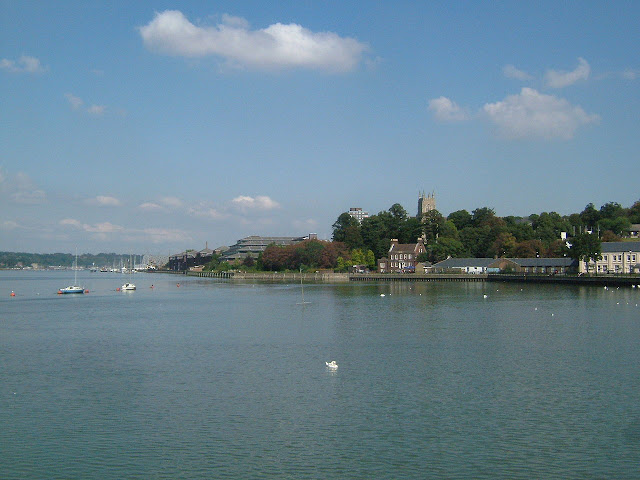
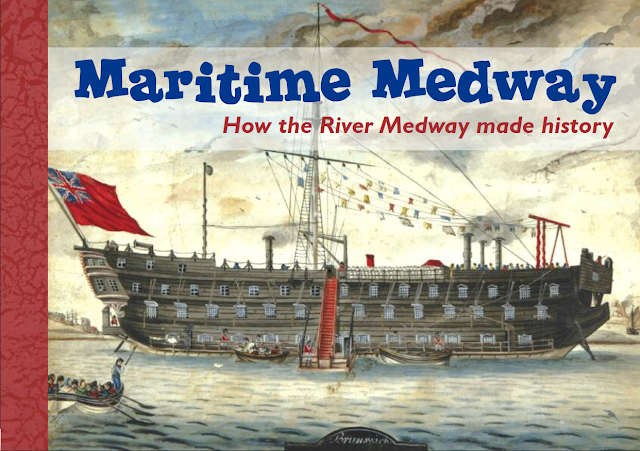
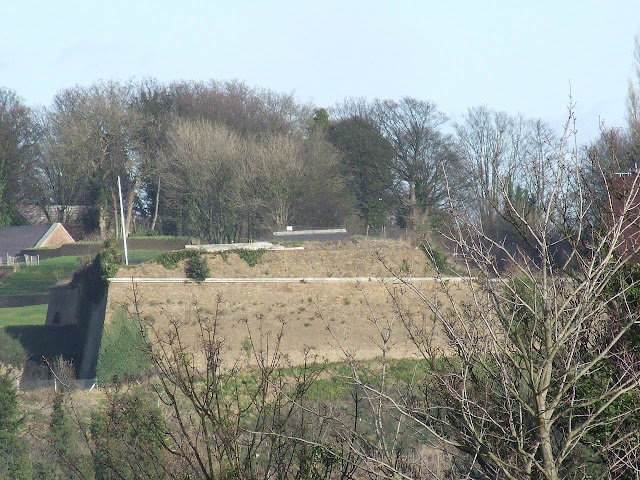
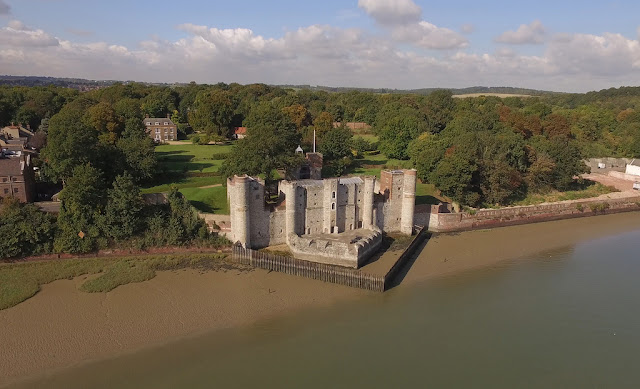




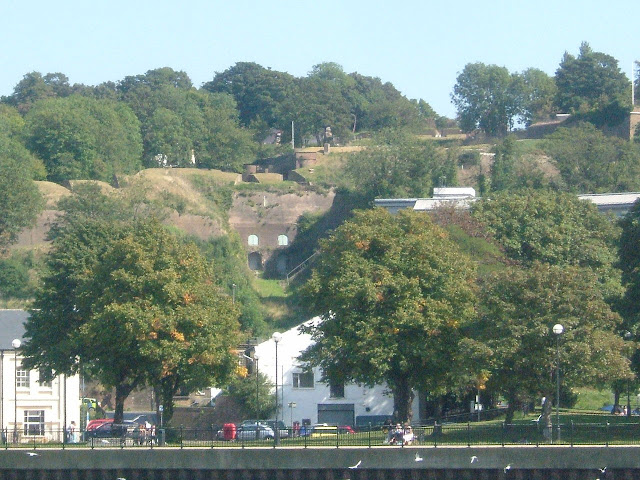


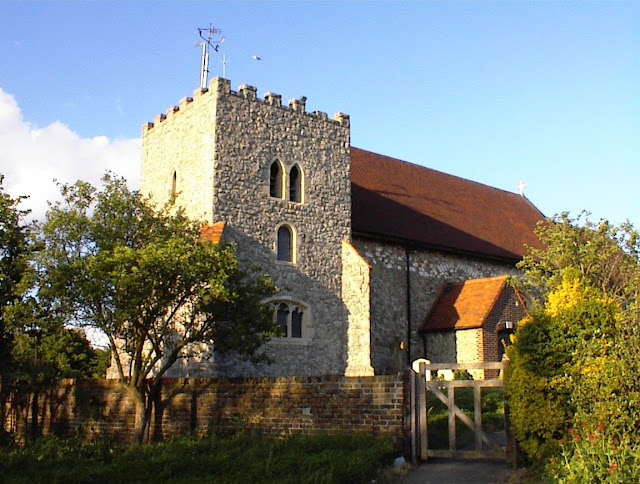

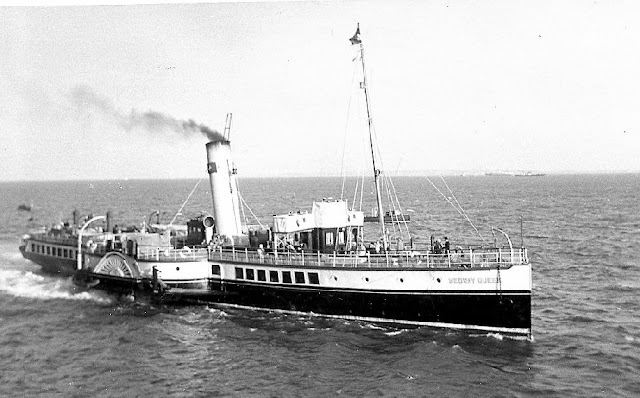


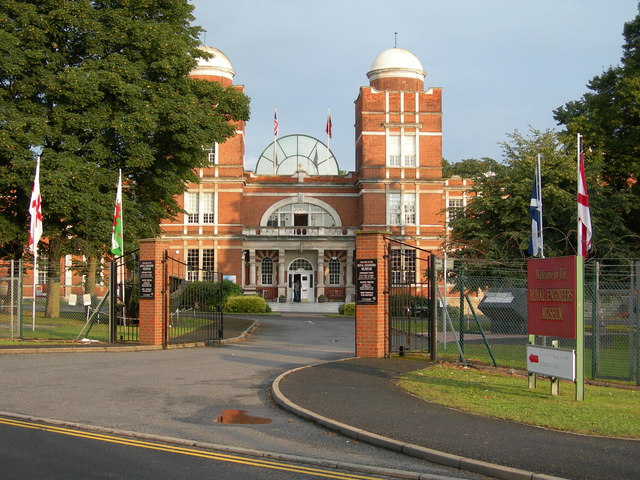



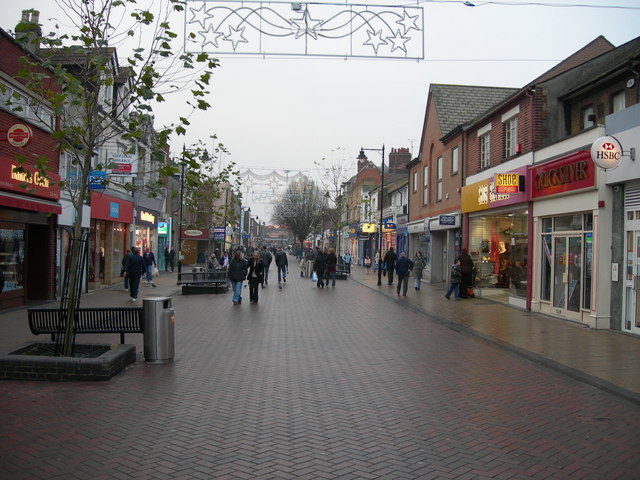



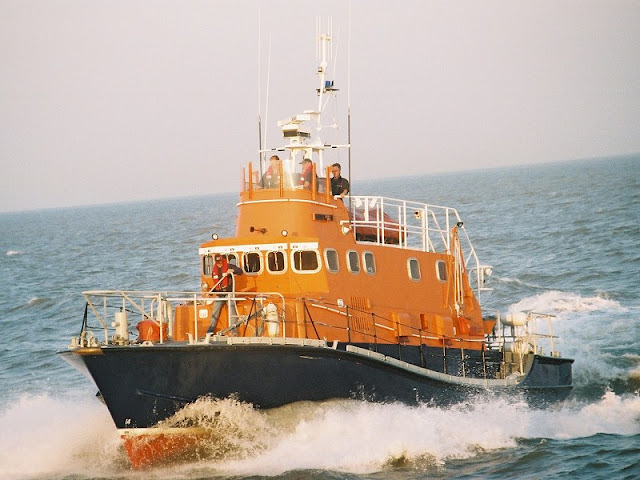


Comments
Post a Comment